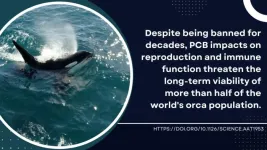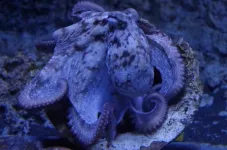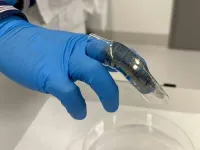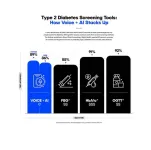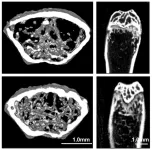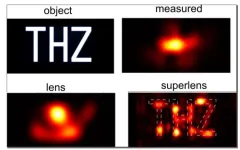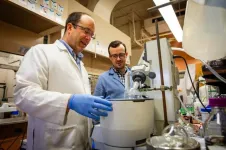For Immediate Release: Wednesday, October 18, 2023, 10:00am U.S. Eastern Time
ROCKVILLE, MD — More than ever before, human genetics and genomics is an essential part of making progress in research, biotechnology, and health. As a key leader supporting research innovation, the American Society of Human Genetics (ASHG) will convene more than 8,000 researchers and clinicians at the ASHG 2023 Annual Meeting in Washington DC, Nov. 1-5 to share emerging discoveries and celebrate the Society’s 75th anniversary.
“Human genetics is transforming science and health at a rapid pace and ASHG’s 75th anniversary Annual Meeting provides both a milestone in the history of human genetics and genomics and a moment to look to a future in which genetics research improves the health and wellbeing of people everywhere,” said ASHG President Brendan Lee, MD, PhD. “Thousands of our members from across the globe will join together to network, share discoveries, and explore new ways to apply genetics knowledge.”
Throughout 2023, ASHG has highlighted key advancements in the field and many of the most exciting emerging directions. Genetic discoveries over the last seven decades have transformed fundamental understanding of DNA structure and function and propelled revolutionary tools and therapies, enabling new knowledge and new ways to prevent, diagnose and treat disease ever more effectively. These discoveries are also affirming humanity’s common ancestry and extraordinary genetic similarity, while enabling the investigation of the small but impactful variations between populations that can influence disease risk and resilience. The Society has also supported important dialogue about the ethical, legal, and social implications of genetic research to inform responsible application of this knowledge.
Alongside recognition of the progress and potential of genetics research, ASHG began its 75th anniversary year by reporting and apologizing for important and painful findings in Society history that caused harm and contributed to racism, and the Society affirmed early progress and its ongoing role to integrate diversity, equity and inclusion within field scientific dialogue and as part of its community. “ASHG’s Annual Meeting provides one vital forum to showcase the field’s remarkable people and research advances, and the program also fosters continued field dialogue and action toward greater diversity, equity and inclusion,” Lee observed. “As we look to future discoveries and applications, our research will succeed only with greater engagement, participation, and leadership from diverse communities as leading researchers, clinicians, and research participants. In the marathon of discovery, we have overcome great obstacles, but we need to incorporate many more diverse perspectives and genomes to fully understand the implications of human genetics and genomics and realize its potential for all,” Lee said.
Highlights of the ASHG 2023 Annual Meeting include:
The Presidential Symposium on Nov. 3, “Delivering on the Promise and Future of Genetic and Genomic Medicine, Not a Sisyphean Task,” panelists Donald Kohn, MD, Dennis Lo, MD, PhD, and Olufunmilayo Olopade, MD will address how genomics and genetics research in recent decades has been transformed by technologies that are now being used in the areas of diagnostics and therapeutics and some of the limitations to achieving broad impacts of genomic medicine on society and health. 15 major plenary talks on scientifically impactful discoveries; more than 3,000 abstract driven posters and platform talks; interactive workshops; and 16 invited sessions on topics including: AI and machine learning in Alzheimer’s disease genetics and genomics The use of race, ancestry, ethnicity as population descriptors in genetics research Progress in returning genomic results to individuals in diverse, large-scale programs Deploying hundreds of mammalian genomes to understand human disease Wrestling with social and behavioral genomics Male infertility – Mendelian traits with lifetime implications Equitable access to genomics research: Australian Aboriginal leadership, expertise, and experience The importance of modeling indirect genetic effects in large-scale genetic studies Genetic diagnosis of severe fetal and newborn conditions: Opportunities and challenges The Distinguished Speakers Symposium on Nov. 5 will feature leaders who have blazed new conceptual and technological trails in the field and will share their perspectives on important areas of opportunity for the future of human genetics, including the progress and implications of the Pangenome Project; emerging cancer research discoveries; how to improve and dispel myths as genetics is taught to future generations; and the future of cytogenetics. “I look forward to welcoming ASHG members to the nation’s capital and to celebrating ASHG’s anniversary,” Lee said. “This is the premier meeting of human geneticists, and I am excited to be able to support this community in realizing the Society’s future.” For more information on ASHG’s 75th anniversary and to see some of the advances powered by the Society’s leaders over the years, visit https://www.ashg.org/discover-genetics/75th-anniversary/.
# # #
About the American Society of Human Genetics (ASHG)
Founded in 1948, the American Society of Human Genetics is the primary professional membership organization for human genetics specialists worldwide. Its community of nearly 8,000 members include researchers, academicians, clinicians, laboratory practice professionals, genetic counselors, nurses, and others with an interest in human genetics. The Society serves scientists, health professionals, and the public by providing forums to: (1) share research results through the ASHG Annual Meeting and in The American Journal of Human Genetics and Human Genetics and Genomics Advances; (2) advance genetic research by advocating for research support; (3) educate current and future genetics professionals, health care providers, advocates, policymakers, educators, students, and the public about all aspects of human genetics; and (4) promote genetic services and support responsible social and scientific policies. For more information, visit: http://www.ashg.org.
6120 Executive Blvd, Suite 500 | Rockville, MD 20852 | 301.634.7300 | society@ashg.org | www.ashg.org
Connect with ASHG on Twitter (@GeneticsSociety) | Facebook | LinkedIn
END
